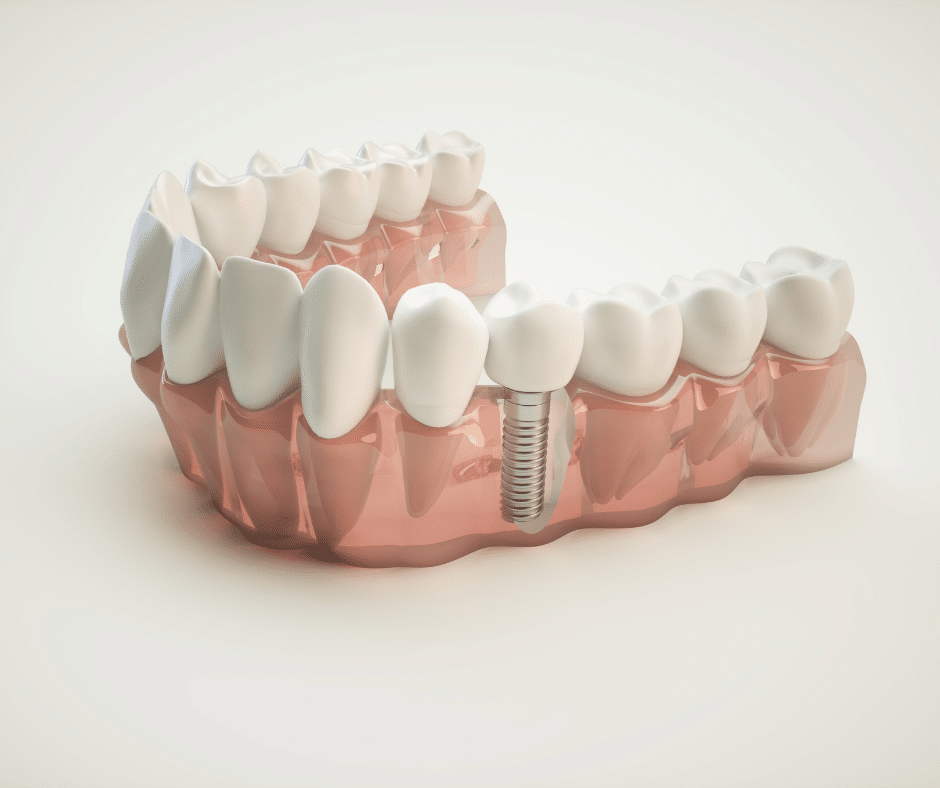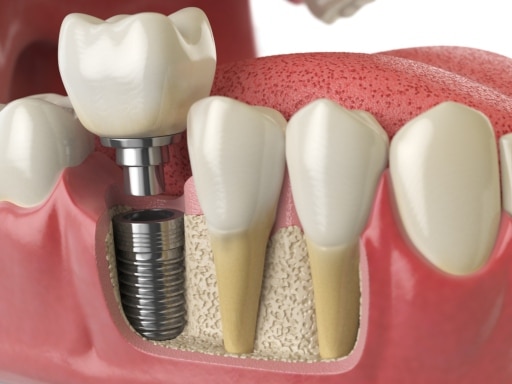Implants and Tooth Replacements – Teeth require extraction usually for one of two reasons; either due to extensive decay or due to bone loss resulting from periodontal disease. Since nearly half of our adult population struggles with periodontal disease, it’s not surprising that nearly 178 million Americans are missing at least one tooth.
Combined with the fact that about 40 million have no natural teeth at all and that is a significant amount of tooth loss. Options for replacement used to be limited to a full or partial denture or a bridge. While those options are usually still available, dental implants are often the best option for replacing missing teeth.
Dental implants can be used to replace one or multiple teeth and sometimes they are used to anchor a denture or as part of a bridge unit.

Improved Quality of Life
The majority of patients who have dentures are rarely happy with them. They are often very difficult to adapt to when you’re used to natural teeth. When a tooth is extracted, over time the bone in that area will deteriorate. This contributes to dentures not fitting well because they will often slide around or click. Patients will usually use a daily adhesive to temporarily remedy the amount of shifting. Implant placement is an option that can minimize or even eliminate the downfalls that come with replacing missing teeth with dentures. Implants are designed to help patients speak and chew food normally after tooth loss. They maintain bone health and integrity; preventing facial collapse with the surrounding teeth. Overall, implant placement has great long-term benefits.
Built to Last – Implants
Most restorations, including dentures, aren’t made to last forever. Patients who have dentures will need frequent adjustments to the fit as the bone levels decrease. Bridges can last 5-10 years but an implant can last a lifetime. If placed properly, the success of an implant is near 98%!
That’s about as close as you can get to a guarantee in the medical field! Implants have been around a lot longer than most people realize and the 30-year survival rate is over 90%.
Preserve Remaining Teeth
As we discussed earlier, placing an implant maintains bone integrity and density. This creates a low impact on the surrounding teeth. The same can not be said for bridges or partial dentures. Bridges use 2 teeth to fill a missing space. If anything happens to either of those two natural teeth, the entire bridge cannot be used and will be taken out.
Partial dentures use remaining teeth for support, which can cause gingival issues and place excessive force on natural teeth. An implant supports itself without adding stress to surrounding natural teeth.
Natural Looks
Implants look similar to crowns and when done properly, both are not distinguishable from your other natural teeth. Once a crown is placed and your implant is complete, you won’t even think about it being different from your other teeth. It will look natural to you and others and will feel as comfortable as having your tooth back.
No Decay
Because implants are titanium they are resistant to decay. If properly cared for, you will never have to worry about the implant needing future treatment. Maintaining optimal home care habits is a must because implants can still suffer from peri-implantitis; think of this as the implant version of periodontal disease.
Regular flossing will be a bit different due to the contour of the implant, but this will be discussed with your dentist after treatment is complete. If you’re using a water flosser this is not an issue.
Implants are absolutely the best option for replacing missing teeth. Your existing bone structure and available space determine whether or not you are a candidate for implants. We utilize a Cone Beam Scan to view the exact bone level and accurate plan for placement of the implant.
These measurements will help determine if implants are right for you. If you’re interested in replacing missing teeth, call Soundview Dental Arts, located in the heart of Tacoma, WA.
Resources:
American College of Prosthodontists

